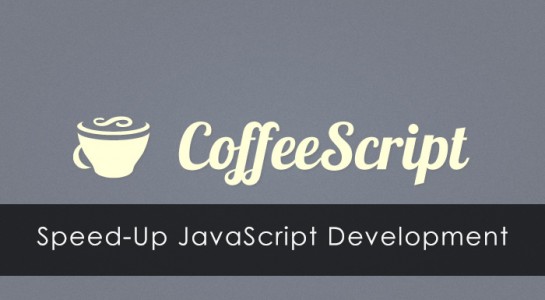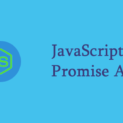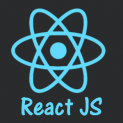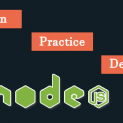Known to be a minute language, CoffeeScript collects into JavaScript. The significant yet short syntax of the CoffeeScript enhances the reading of your code that consequently crafts it simple to sustain and hold extremely fewer bugs. While writing CoffeeScript, the JavaScript it accumulates will be administering on Internet Explorer’s old versions. You won’t even remember about the normal JS drawbacks, such as automatic semicolon addition, and tracking commas. Very recently CoffeeScript made its entry into Tiobe directory of top 100 programming languages, and here it is positioned at the 64th place.
So let’s get to know how CoffeeScript increases the JavaScript development!
- Installation
With the use of node package manager you can easily install the CoffeeScript worldwide by typing this on your workstation:
1 2 3 |
- Compilation
CoffeeScript files comprise of .coffee file extension. Such files are accumulated automatically, or else you can place a viewer which will collect your script every time it is being saved with distinct contents. In order to manually collect, you can move to index where script is written as:
Also Read: SetInterval vs SetTimeout in JavaScript
1 2 3 | cd E:\apps\something\logic; |
and then administer the next command:
1 2 3 | coffee –c app. Coffee |
It will thus produce an app.js file in the similar index that you can add in your project. You would like app.js mostly to be revived every time you are saving the file. Thus, you collect it and include a viewer when you type: coffee – CW app. Coffee. These examples were analyzed with the use of CoffeeScript v 1.9.0.
- CoffeeScript Basics
There is no need to state variable in CoffeeScript, though you might require placing an initial value. You do not require typing semi-colons [;] at the line end. You now write: hasBody=true. You can even describe purposes, sans utilizing parentheses, but is wanted for outer purpose calls. Thus you can execute the next: $[“.messages”] .show ‘slow’
The action of indenting is significant in CoffeeScript with two spaces or a tab:
1 2 3 4 5 6 |
- Booleans and Conditionals
The keywords in CoffeeScript on, yes, and true are equal, and pass on to Boolean true, while off, no and false are even equal and pass on to Boolean false.
For analyzing equality or without equality [===and !==], you can apply is and isn’t. Then you can apply producing single-line conditional statements. You can also utilize and and or for referring && and || correspondingly. These signify that you can make a comparison with a value to two distinct values sans recurring yourself. One example of this conception include: 1 x= 53, 2 y= 40, 3 z= 33, 4 b= true 5 if b is on and x is 53 and z <y> 11, then alert “ALRIGHT!”
Thus the final statement collects to:
1 2 3 4 5 | if (b === true && x === 53 && ( z < y && y > 11)) { alert ( 'ALRIGHT!'); } |
- Iteration, Filters and Ranges
In CoffeeScript the for..in syntax is utilized for iterating purpose on a collection, whereas for..of loop is applied for iterating purpose over an object’s properties. You can state the statement that is to be implemented in the loop, before writing the loop, which is helpful while writing one-liner loops. A very helpful feature of CoffeeScript is the capability to craft numeric varieties that is exclusive and inclusive.
If you’re crafting a variation of more than 20 components, CoffeeScript acts pretty cunningly, while you can view from generated JavaScript. Hence the implementation happens in an unidentified function for protecting against uneven conflict and possibility leakage.
- Functions as well as ‘this’ keywords
In order to craft functions, you can apply -> tracked by definition. If you want to include parameters, you can insert them in the parenthesis () ahead of ->
You can include default assessment by placing parameter alike something. You can even apply @ rather than this keyword: 1 $[“a”].click-> 2 $[@].hide ‘slow’ It collects to:
1 2 3 4 5 | $("a").click[function() { return$(this).hide('slow'); }); |
- ES6 Style Classes and OOP
CoffeeScript assists the object-oriented program as well as inheritance. You can describe classes: 1 class Animal 2 Constructer: (@name, @breed) -> 3 @.introduce=-> 4 console.log 5 6 husky equal to new Animal 7 husky. Introduce ()
Your purposes can easily acknowledge a boundless number of cases if you include … (ellipse) after limitation. Here every value after as well as including that parameter are involved in the array form. 1 showAwards = (awards…) -> 2 console.log (“Awards collected: # {awards.join ‘, ‘}”) 3 4 showAwards “Award 1”, “Award 2”, “Award 3” This the code above productions will be: 1 Awards collected : Award 1, Award 2, Award 3.
Thus, we hope by now you might have got a clear idea on CoffeeScript speeding up JavaScript development, which will surely help you to implement it too.




















